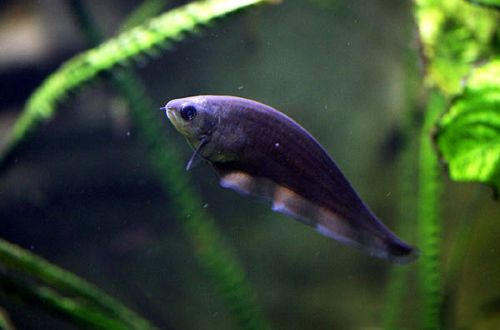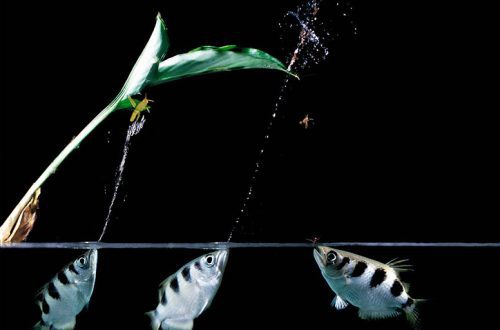
Black xenosist
The African Knifefish or Black Xenomyst, scientific name Xenomystus nigri, belongs to the Notopteridae family. Considered a very hardy species. Compatible with many other fish of suitable size. It can be a good choice for a novice aquarist who wants to acquire an unusual, exotic fish, but at the same time does not require special conditions.

Contents
Habitat
Occurs from the equatorial and tropical parts of the African continent. The natural habitat covers the territories of Nigeria, Cameroon, the Democratic Republic of the Congo, Egypt, Chad, Liberia, Gabon, Togo, Sudan, Benin, Sierra Leone and Angola. It lives in the basins of large rivers: the Nile, the Congo and the Niger. This species prefers heavily overgrown areas of rivers and floodplain lakes, however, it occurs in various biotopes.
Brief information:
- The volume of the aquarium – from 200 liters.
- Temperature – 23-28°C
- Value pH — 5.8–7.5
- Water hardness – soft to medium hard (1-20 dGH)
- Substrate type – soft, silty
- Lighting – subdued, dim
- Brackish water – no
- Water movement is weak
- The size of the fish is up to 30 cm.
- Nutrition – meat feed
- Temperament – conditionally peaceful
- Content alone with other species
Description
Adult individuals reach a length of about 30 cm. The shape of the body resembles a knife blade, which is reflected in the name of the species. The anal fin stretches from the head and smoothly passes into the tail, is the main means of swimming. By making wave-like movements, the fish can easily move both forward and backward. The dorsal fin is absent.
The African knifefish lives in conditions of poor lighting, therefore it has large eyes and well-developed organs of smell. Another feature is the structure of the swim bladder. It additionally performs the function of breathing. In addition to gills, fish breathe atmospheric air, regularly swallowing it from the surface.
Food
Carnivorous species, in the aquarium should be fed fresh or frozen foods such as bloodworms, shrimp, earthworms, mussels and other shellfish. You can diversify the diet with granular dry food, but they should not be the basis of the diet.
Maintenance and care, arrangement of the aquarium
The optimal size of the aquarium for one fish starts from 200 liters. The design uses a soft sandy substrate, various snags, smooth stones, boulders. Dense plantings are recommended. To simulate natural water conditions, dried oak leaves, Indian almonds or processed peat are used. As they decompose, they give the water a characteristic brownish tint, saturating it with tannins (tannins).
The diet involves a large amount of organic waste. An effective filtration system and regular maintenance of the aquarium will be required to maintain the biological balance. The latter include weekly replacement of part of the water with fresh water and regular cleaning of the soil and decorative elements.
Behavior and Compatibility
The Black Xenomyst becomes territorial as it ages, so a large aquarium is required to keep a group of these fish. Compatible with non-aggressive species of comparable size, eg Mail Catfish, Armored Catfish, Synodontis, Dangerous for small fish that can fit in its mouth. They can become random prey.
Breeding / breeding
They are difficult to breed, the appearance of offspring in a home aquarium is unlikely. The mating season is accompanied by unusual sounds that males make during courtship. The female lays from 150 to 200 eggs, attaching them to the surface of snags or stones. The male stays near the clutch to protect it, and also creates a flow of water with his fins so that the eggs do not have a lack of oxygen. The incubation period lasts about 10 days, after which the parental instincts weaken and the male swims away. The fry become left to themselves.
Fish diseases
Unpretentious and hardy look. The main cause of diseases is a sharp and significant deterioration in living conditions (poor quality of water, feed), as well as injuries. For more information on symptoms and treatments, see the Aquarium Fish Diseases section.





